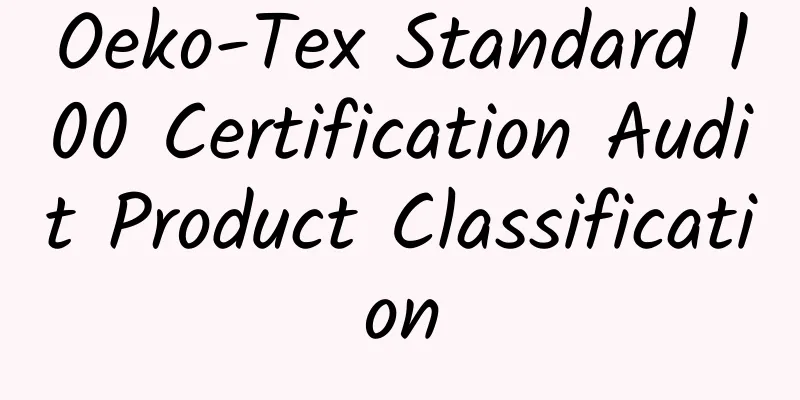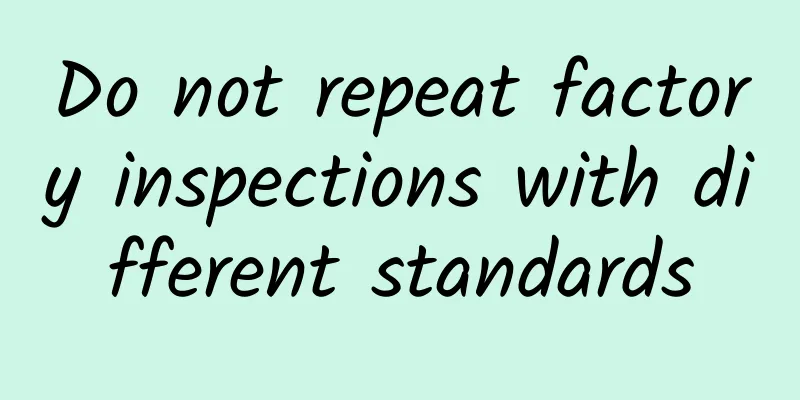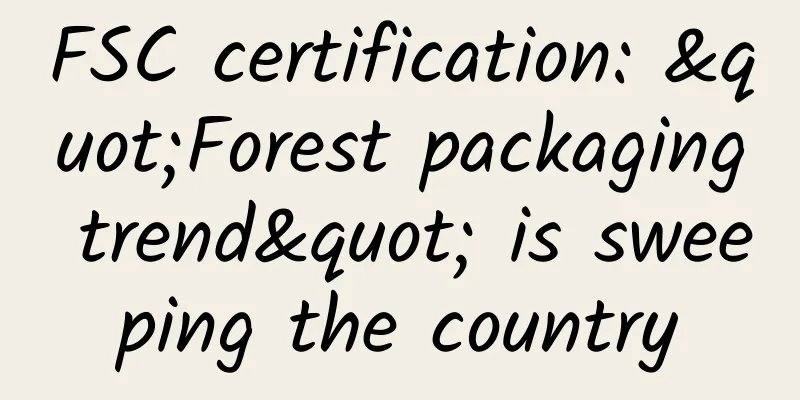Oeko-Tex Standard 100 Certification Audit Product Classification

|
How is the Oeko-Tex Standard 100 certification audit product classification divided? Since February 1998, Oeko-Tex Standard 100 has divided products into four categories, replacing the previous 16 product groups. This textile classification is easier and simpler for certification applicants. The Oeko-Tex Standard 100 certification audit standard is a product grade divided according to the use of textiles. These products include not only goods to be sold, but also unprocessed raw materials and accessories. Oeko-Tex Standard 100 certification audit product classification is based on the different uses and testing methods of the products to form the following different levels: 1. Baby products (category 1) All fabrics, raw materials and accessories used to make clothing for infants and children under two years old, except leather clothing. 2. Products that come into direct contact with the skin (Class II products) Fabrics that are in direct contact with the skin when worn (e.g. tops, shirts, underwear, etc.) 3. Products that do not contact the skin (category 3 products) When worn, only a small part of the fabric directly touches the skin, and most of the fabric does not touch the skin (such as filling, lining, etc.) 4. Decorative materials (four categories of products) All products and materials used for sewing interior decoration products, such as tablecloths, wall coverings, furniture fabrics, curtains, upholstery fabrics, floor coverings, window mats, etc. The Oeko-Tex Standard 100 certification audit standard stipulates very strict conditions for products for babies and toddlers: for example, the formaldehyde limit is 20ppm, while the formaldehyde limit for products that come into direct contact with the skin, such as bedding, underwear, shirts and loose tops, is 75ppm. Products that do not come into direct contact with the skin, such as outerwear (suits and coats for men and women) and home decorations (tablecloths, decorative fabrics, curtains, fabrics on furniture, mattresses), only need to have a formaldehyde content below 300ppm. For comparison, the formaldehyde content of an apple is at least 20ppm. Formaldehyde in cosmetics is used as a preservative. Products such as mouthwash must be announced if the formaldehyde content exceeds 100ppm. According to the law, formaldehyde content in textiles must be declared if it is 1500ppm or higher. From the above introduction to the Oeko-Tex Standard 100 certification audit product classification, we can understand that the regulations for infants and toddlers are very strict, so the Oeko-Tex Standard 100 certification inspection standards are also quite strict, and it is relatively difficult to successfully pass the certification audit. If this is your first time to introduce the Oeko-Tex Standard 100 certification audit or your factory inspection audit experience in this area is not sufficient, it is recommended that you find a professional factory inspection counseling company for guidance. Shanghai Chaowang is a leader in the factory inspection consulting industry. It has 16 years of factory inspection counseling experience in factory inspections, and tens of thousands of factories across the country have successfully passed customer factory inspections under the guidance of Chaowang. It is an absolutely trustworthy factory inspection consulting company! |
<<: GOTS/OE/GRS System Certification Management Manual
>>: Factors Affecting the Effective Operation of ISO9001 Quality Management System
Recommend
What is SCS Kingfisher Certification?
What is SCS? SCS Global Services, referred to as ...
Timberland_Timberland factory inspection documents and contents
Timberland_Timberland factory inspection documents...
Basic introduction of Carrefour, an ICS member
<BR>Carrefour Group is the largest retailer ...
To help export enterprises survive the cold wave of foreign trade, we offer free factory inspection training courses
The Canton Fair just ended, some were happy and s...
Walmart launches "Green Product Promotion Week"
From LED TVs that save 35% of electricity compare...
What is OEM? What is the difference between OEM and ODM?
What is OEM? OEM stands for Original Equipment Ma...
How to obtain OCS certification?
OCS certification application process: 1. Applica...
What service sites does eBay have? How do I register with eBay?
What service sites does eBay have? eBay was found...
What is Groupon? Why should I buy on Groupon?
Groupon is building daily habits in local commerc...
What impact will the new eBay overseas warehouse policy have on sellers?
eBay’s new overseas warehouse policy will more or...
What is the Chinese official website of eBay? How to buy from overseas on eBay?
ebay/" target="_self">ebay Chin...
EICC factory audit accident investigation and control
EICC Accident Investigation and Control: General ...
The latest version of OEKO-TEX Standard 100 certification standard will take effect on April 1
At the end of 2012, a piece of news that 14 world...
How to create a hot-selling product on eBay? What are the ideas?
In the early spring of 2020, many eBay sellers we...
Walmart's Fire Protection Requirements for Factory Inspection in 2015
1. All workshop safety exit doors no longer accep...









